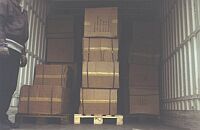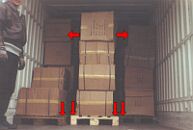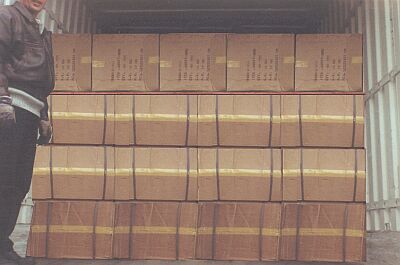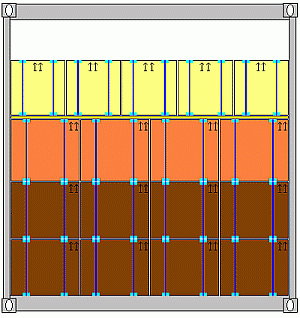 |
 |
Pallets which have not been packed flush inevitably result in gaps in the stow which can only be eliminated at the cost of considerable labor and material. There is only one solution in this case - unpack the pallet and stow manually.
 |
|
| Container not entirely correctly packed due to packaging |
The packages are here neatly packed edge to edge, as this is the only way for the underlying layers to withstand the forces from above; since this was not possible for the final layer due to the package dimensions, plywood interlayer dunnage had to be laid beneath the final layer.
The shortcomings in strapping due to the lack of edge protectors will not be discussed any further at this point. However, and this is why the traffic light is at amber, it is to be suspected that the cartons are not correctly oriented. The appearance of the cartons and the adhesive taping could indicate that the flutes in the carton board are not vertical, but horizontal. Again: Adequate marking is an indispensable component of the packaging.
This is correct:
 |
Correctly packed container with ideally harmonized packages |
The lower layers are packed edge to edge, i.e. "flute" to "flute" in correctly constructed cartons. Since this is not possible in the final layer, interlayer dunnage ensures adequate distribution of pressure to the underlying layers. The remaining empty space at the top of the container presents no risk to the cargo as the package dimensions mean that there is no risk of their "popping up" out of the stow.
Additional measures such as side dunnage, nonwoven fabric covers etc. could be necessary if there were any risk that the packages could be damaged by container sweat.